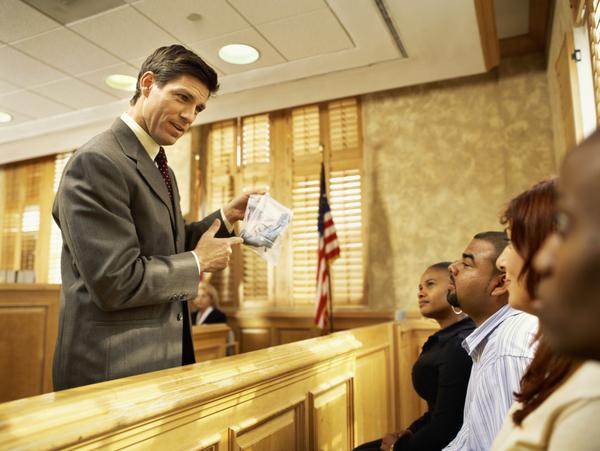How Trial Presentations Enhance Your Argument and Persuade Jurors
Test presentations function as a critical system for improving legal debates and persuading jurors. By integrating aesthetic aids, narrative frameworks, and psychological involvement, attorneys can create an engaging case that reverberates on multiple degrees. The calculated use visuals not just clarifies complicated details however also catches jurors' interest better than words alone. Nonetheless, the art of storytelling plays an equally essential role in transforming factual evidence into an engaging narrative, forming jurors' understandings - trial presentations. Recognizing these aspects can substantially affect trial outcomes, elevating the inquiry of just how each element adds to this intricate dynamic.

Relevance of Aesthetic Help
Aesthetic aids play a crucial duty in boosting the performance of trial discussions, as they can dramatically raise target market involvement and retention of information. In the context of a trial, where jurors are charged with processing complex information, visual aids offer to simplify and make clear crucial points. Charts, graphs, and photos can communicate information and concepts that may otherwise bewilder or puzzle jurors, enabling a much more simple understanding of the evidence provided.
Additionally, aesthetic aids help in maintaining juror attention throughout the procedures. By breaking the monotony of verbal statement, these tools can stress important disagreements, making them extra remarkable. Reliable visual help can likewise stimulate emotional responses, which can be crucial in persuading jurors to straighten with the speaker's story.

Crafting Compelling Narratives
An engaging narrative is crucial in trial discussions, as it serves as the backbone of efficient persuasion. It permits lawyers to weave together facts, evidence, and psychological components right into a coherent story that reverberates with jurors. This narrative framework makes it possible for jurors to comprehend the intricacies of the case while assisting them through the lawyer's argument.
To craft a compelling narrative, lawyers need to focus on quality and comprehensibility. Furthermore, the use of vivid summaries can produce psychological photos that aid jurors envision the events, making the story more unforgettable.
Furthermore, incorporating essential themes throughout the presentation strengthens the core message and help in retention - trial presentations. The narrative should not only communicate information but also evoke a feeling of justice, highlighting the risks involved. Eventually, a well-constructed narrative fosters a link in between the jurors and the situation, placing the lawyer's disagreement as both legitimate and compelling, thus boosting the likelihood of a beneficial decision

Engaging the Jury Psychologically
Efficient jury interaction hinges on the attorney's ability to get in touch with jurors on an emotional level. This connection can considerably impact jurors' perceptions and their best decision-making. Utilizing emotional charms permits attorneys to humanize the instance, transforming abstract legal ideas right into relatable experiences. By offering real-life stories or endorsements, lawyers can evoke compassion and concern, fostering a much deeper understanding of the concerns at risk.
Aesthetic help, such as photographs or videos, can even more boost emotional interaction, providing jurors with vibrant representations of the instance's human elements. Crafting a narrative that highlights the struggles and accomplishments of the individuals included ensures that jurors see beyond the lawful disagreements and recognize the human consequences of their choices.
Additionally, tone and body language play a vital function in sharing emotion. A lawyer's enthusiastic shipment can reverberate with jurors, reinforcing their psychological financial investment in the event. It's essential to balance psychological appeals with factual evidence, making sure that jurors really feel forced to act while remaining grounded in the fact. Eventually, an emotionally engaged court is more probable to be encouraged, making emotional link a crucial element of effective trial discussions.
Structuring Your Discussion

The body of the discussion go to my site must be practically fractional into vital factors, each sustained by engaging proof. It is useful to utilize narration strategies to weave realities into a story that jurors can easily follow. Visual aids, such as charts and video clips, can enhance understanding and involvement, helping to highlight important pieces of evidence.
Real-World Case Studies
Examining real-world situation researches gives vital insights into the art of trial presentations and persuasion. The site instance of "O.J. Simpson v. The Individuals of The golden state" highlights exactly how aesthetic aids and engaging stories can persuade jury understandings. The protection group efficiently used a strategy that combined high-profile expert testaments with multimedia presentations, which mesmerized jurors and ultimately influenced their decision.
An additional notable example is the "McDonald's Coffee Case," where the complainant's lawyers utilized visuals photos of the injuries suffered by Stella Liebeck. trial presentations. This stark aesthetic evidence played an important duty in communicating the intensity of her burns, leading to a significant court award. Such situations demonstrate that impactful trial discussions commonly depend upon the efficient combination of visuals and narration to evoke psychological actions from jurors
Moreover, the "Casey Anthony Trial" highlighted the importance of narrative comprehensibility and reputation. The prosecution's failure to establish an engaging timeline diminished their influential power, emphasizing the necessity of a well-structured click for source discussion. Examining these instances exposes that effective trial discussions require tactical preparation, emotional interaction, and the capability to reverberate with jurors' worths and beliefs.
Verdict
Trial presentations considerably boost arguments and persuade jurors through the strategic use of aesthetic aids, engaging stories, and psychological interaction. A well-structured discussion balances emotional informative post allures with accurate evidence, ultimately reverberating with jurors' worths.